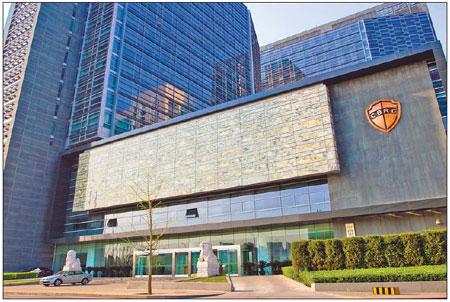
The China Banking Regulatory Commission launched a series of measures on Tuesday to encourage specialized financial services for small and medium-sized enterprises because of financial difficulties from monetary-tightening policies by the central bank. [Photo/China Daily]
Report assesses likely effects of more monetary tightening
BEIJING - China's commercial banks are likely to face revenue declines in the second half of this year, assuming that the central bank further tightens monetary policies to tame soaring inflation.
The People's Bank of China (PBOC), the central bank, may continue to curb excessive liquidity by raising the reserve requirement ratio for commercial banks in the second half, indicating banks' profit from interest is likely to decrease, according to a report released by Ernst & Young Global Ltd on Wednesday.
The report was based on a survey of 17 big, listed banks in China, including Industrial and Commercial Bank of China Ltd, Agricultural Bank of China Ltd and Bank of Communications Ltd.
It showed, on average, about 80 percent of the respondents' net profit came from lending in 2010; for some small and medium-sized banks, the figure was 86 percent.
That means the expansion of China's commercial banks greatly relied on asset growth, increasing potential cash-flow risks, the report said.
Peng Wensheng, chief economist at China International Capital Corp, said that the PBOC may raise the reserve requirement ratio and the benchmark interest rates again in June, to fight possible higher inflation in the coming months.
The consumer price index, the main gauge of inflation, is forecast to jump to 5.6 percent year-on-year in May, boosted by food price increases, said Peng.
"More stringent regulatory requirements on capital adequacy will make it more difficult for commercial banks to earn large profits from the interest margin between deposits and loans," said Geoffrey Choi, leader of the banking and capital markets department at Ernst & Young in China.
The tight-credit policy will drive commercial banks to increase non-interest income from cash management, credit cards, investment banking and e-banking services, according to Choi.
Because small and medium-sized enterprises met financial difficulties as a result of the nation's monetary-tightening policies, the China Banking Regulatory Commission launched a series of measures on Tuesday to encourage specialized financial services for them, including using a lower risk weighting and issuing bonds.
With a forecast that the growth of credit assets may ease, providing financial services to small-scale companies will become a new driver of commercial bank's profit in 2011, according to Ernst & Young.
"A strong balance sheet and diversified business operations will help Chinese banks meet the new regulatory standards and adapt to growing customer demand for integrated financial services," said Choi.
According to the Ernst & Young report, the total net profit of the 17 listed banks was 687.3 billion yuan ($106.1 billion) in 2010, a 33 percent increase from 2009.





